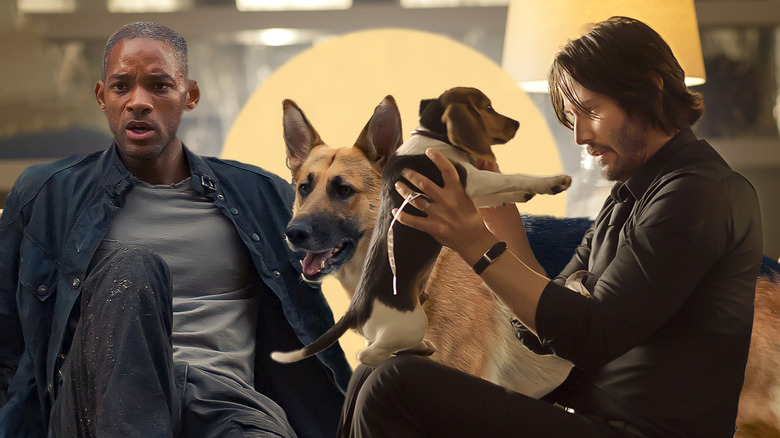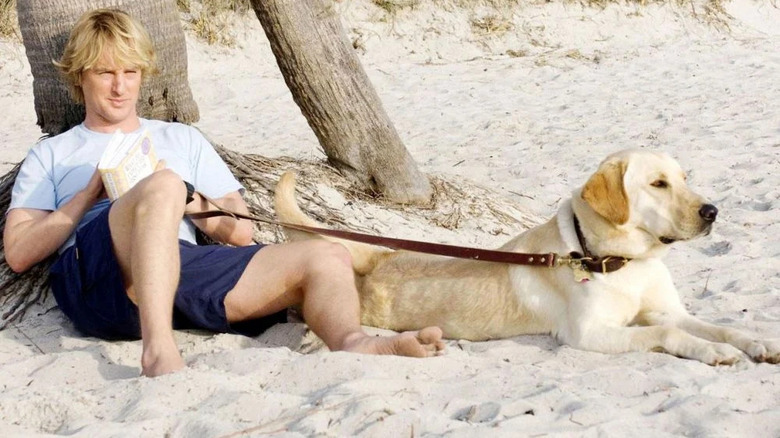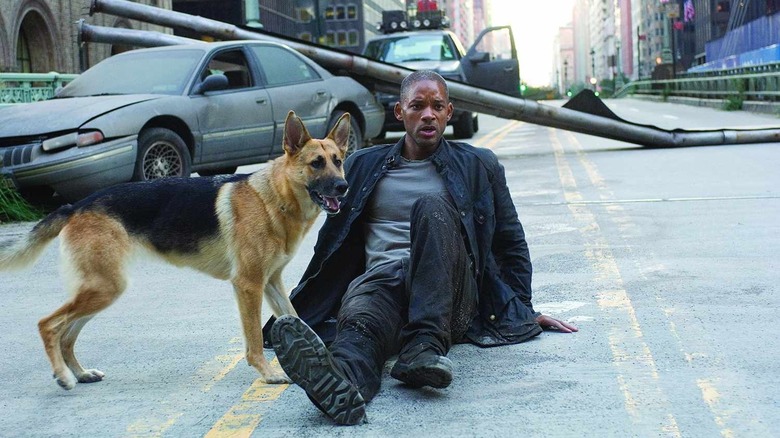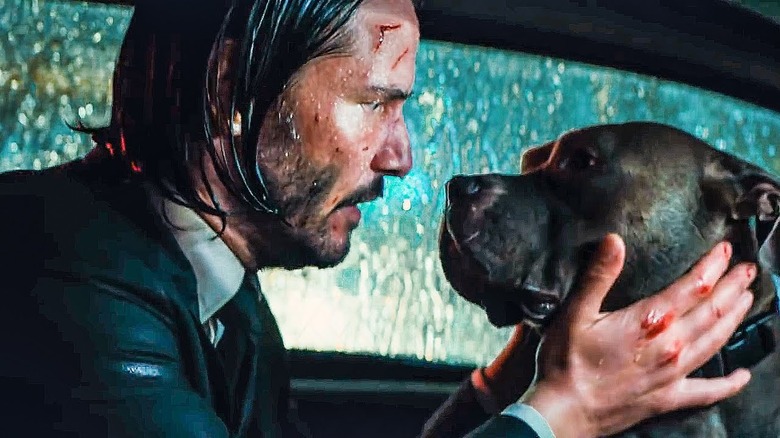Why Dog Death Scenes In Movies Are The One Line Many Viewers Won't Cross
Even the most die-hard loyal moviegoer has his or her limits, when push comes to shove. Some people really can't stand extreme violence. Some people think gross-out comedies aren't worth their time. Others hate romantic comedies — or superhero flicks, if you're Martin Scorsese. Everyone's got an issue with some trope or genre or what have you, but there's one line that seems relatively universal, even for people with allergies to pet dander.
There's a reason that an entire website is dedicated to whether or not a dog dies in a movie or television show (the site has, since its inception, expanded to include other potential triggers, but it's still called "does the dog die"). People do not like to see dogs die on screen. Whether you're a cat person or you're wondering if you can get away with adopting a fourth dog without your landlord noticing, a dog getting killed in a movie just feels... totally and completely wrong. Despite that, it's used as a plot device in plenty of TV shows and movies, which is probably enough to prevent an average moviegoer from even checking the property out in the first place, depending on their level of tolerance for this upsetting trope.
So why is this so upsetting for viewers? Why are dog death scenes in movies the one line many viewers won't cross, and what does an ill-fated dog represent on-screen that provokes this kind of disgust?
Sometimes, a dog dies because the whole story leads to that
If we're going to take on the upsetting task of breaking down the two main categories of on-screen dog deaths — which is what we're here to do! — then it can be divided between "the dog dies to advance the narrative" and "the narrative leads to the dog dying." For the latter, you know what falls into that category; movies like "Marley & Me" and "My Dog Skip" chart the absolute highs of dog ownership and the love and joy that laughter comes with it, only to force the audience to watch that damned lovable dog pass away after a good, long life with his or her best buddy. For anyone who's lost a pet, this can be particularly hard to stomach, and it stands to reason that anyone sensitive about their dogs would rather hug their pup than watch Marley get sick.
These movies are pretty hard handle for that reason, but the former category might be worse, in that you can never quite tell when a dog might die, and it only does it to serve as an emotional push for the main human character.
Other times, the dog dies because the narrative demands it
Early in "Age of Adaline," a movie about how Blake Lively is very beautiful and aging well, a dog dies unexpectedly, making it a dangerous film to watch on an airplane. The "John Wick" franchise famously opens with Keanu Reeves' retired assassin receiving a perfect little beagle puppy from his late wife, only for the puppy to die a particularly brutal death when he's attacked by a gang that steals his car (if this helps, John eventually gets another dog, but Daisy's death still stings). Right in the thick of "I Am Legend," Will Smith's Robert Neville has to kill his own dog after she's infected with a zombie bite — and audiences have spent the entire film with Robert and Sam. "Game of Thrones," naturally, included dog death scenes alongside its other brutality, as all but two of the Stark's direwolves meet bloody ends on and off-screen.
When it comes to "John Wick" and "I Am Legend" in particular, there's an obvious narrative function behind these dog deaths, and it's to really highlight how isolated both John Wick and Robert Neville are in their respective worlds. John Wick is grieving the loss of his wife and actively avoiding returning to his killer lifestyle until Daisy's death draws him back in: losing Sam and having to kill her himself drives Robert onto a rampage that ultimately brings the movie to a close. "Age of Adaline" does it to show that a super-old but also hot Blake Lively loses everything she loves to time, and also, presumably, to be mean.
Why do dog death scenes deter viewers?
So, the question remains: what puts viewers off of dog death scenes specifically over other depictions of violence? The explanation might seem obvious, but here goes: killing a dog feels like killing innocence itself. In "Thrones," it's also to illustrate how vicious the world is, particularly when Robb Stark (Richard Madden) is killed at the Red Wedding and his enemies take the extra (gruesome) step of killing his wolf, Grey Wind, and then attaching its severed head to Robb's decapitated body as a sick trophy.
Taking something as sweet and innocent as a dog, a cuddly best friend whose sole purpose in their tiny life is to stick by their owner's side and be a faithful companion, and disposing of it as a plot device just feels icky on every imaginable level. Killing a fully-fleshed out human isn't exactly easy to watch, but in the case of Daisy and Sam in particular, we've watched as these dogs are loving, loyal friends to John and Robert, which makes it even harder to handle when the story does away with them to make these brooding men feel big feelings.
Killing a dog on-screen feels sacrosanct and wrong, but writers will probably keep utilizing it as long as stories are told. For normal people who don't want to watch that, that makes sense — so just give the movie or show a quick Google search before you get too involved.



